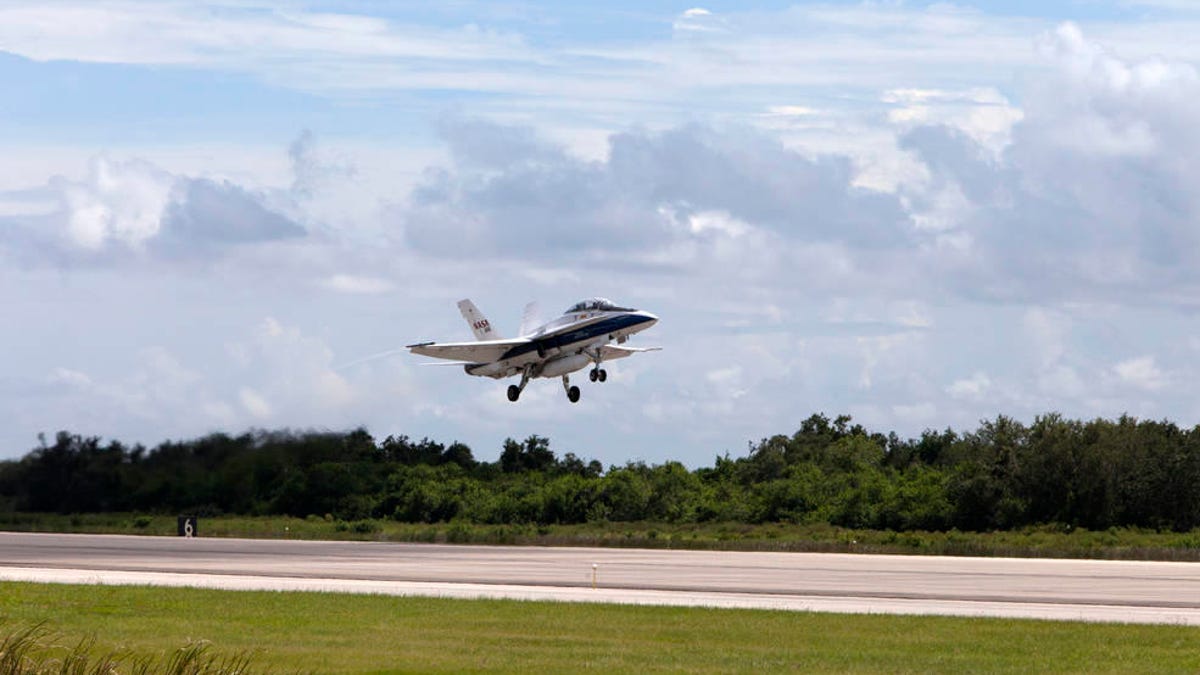NASA is showering one city with sonic booms and hoping no one notices
The test flights off the coast of Texas are meant to measure community response to a dive maneuver that makes more of a "quiet thump."

A NASA F-18 jet is performing special maneuvers to test quieter sonic booms off the coast of Texas.
NASA has been deliberately creating sonic booms off the coast of Galveston, Texas, since Monday in the hope that residents on the barrier island community won't be too bothered by the sound of an F/A-18 aircraft briefly going supersonic.
That's because the research jet is performing a dive maneuver designed to reduce the normally thunderous sonic boom to what NASA calls a "quiet thump," more like the sound of a car door slamming.
The test flights are aimed at measuring the community response to the new, quieter booms and are part of NASA's larger effort to develop a new, more muted supersonic plane that might be able to fly over land.
How NASA hopes its sonic booms will be heard.
Current regulations prohibit flights over land that generate sonic booms. The last supersonic airliner was the Concorde, which flew only routes over the ocean, but it stopped service in 2003. There are a currently a few efforts afoot, like one from the startup Boom, to bring back those flights with new planes in the next decade.
The first flight of NASA's new, experimental plane is still years away, but the data being collected from volunteers in Galveston this week could play an important role in its development.
So far, after the first few days of booms and/or quiet thumps along the gulf coast, the results seem to be mixed. While some have reported rattling windows from the booms, some unbothered beachgoers mistook the sound for distant thunder, according to local media.
NASA has enlisted 500 official survey participants to rank the loudness of the booms and report back to the space agency. But an informal survey of volunteer citizen scientists is also ongoing and that unofficial data, which is being collected through NASA's website, so far shows the majority of people reporting medium-volume booms. There have been just a handful of loud booms reported. Reports of quiet booms outnumber loud boom reports by two-to-one according to NASA's data map as of Wednesday, but most people report hearing a medium-loud noise.
If it's determined that quieter booms are tolerable, we could be on the way to much faster flights in the future. That is, of course, if we all aren't just taking a Hyperloop everywhere by then.
NASA turns 60: The space agency has taken humanity farther than anyone else, and it has plans to go further.
Crowd Control: A crowdsourced science fiction novel written by CNET readers.

